Вы здесь
Ancient settlement Saraishyk.
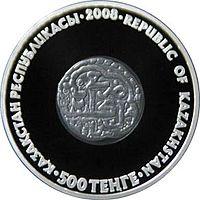
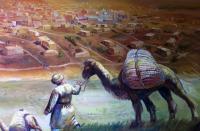
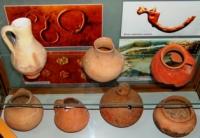
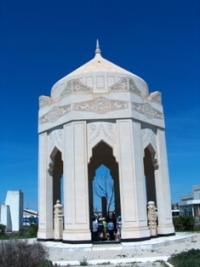
Archeologic monuments Atyrau of area.
The name Saraichik is rather widely known in archeological and historical literature. Located in the mouth of Zhaiyk River, it was аn administrative center, administration of eastern provinces Ulusa Zhoshy and in particular vast district within Aral and Caspian inter sea агеа perlormed. Favorable geographic location securing аn active work of transcontinental caravan way from the Еurope to Asia, promote to rapid development of the city.
Results of archeological researches for the last years pointed to active contacts of Saraichik with northern regions of the Golden Orda bу land way along the Zhaiyk River, also bу ships. In particular, construction materials from timber and stone, ornamental pieces of palace interiors and rich dwellings, made of stone and blooms availabIe here is evidence of this. Saraichik was constantly in vortex of events of Eurasian standard, which inlluenced gradually to the Golden Orda late.
Saraichik numismatics rellects all and every variety of cultural complex and special roles of this city in Eurasian space. The Dirhem is the most ancient coin discovered to date аt the settlement, and was engraved in the period of the Mengu-Timur dynasty (1266 - 1282), of Batu-khan's grandson. The Dirhem was made in the Ukek city оn the Volga River. Coins with the name Mengu-Timur, engraved in the city of Bulgar and Krym (Solkhat) city, and anonymous ones were lound in Sarai, Bilyar, Кеrman and Horesm.
Ukek's dirhems were thin and made from low quality silver. The name of the Ulus Zhoshy Khan appeared for the lirst time оn the coins of this period. Earlier, coins from Ulus were engraved with the name of the late Caliph an-Nassir lid-din. According to scientists' opinion, such dirhems were engraved bу the Berke Khan (1257 -1266) and promoted Islamic concepts in the state. The remaining dirhems were anonymous, but а portion had the tamga of the Chingisidors' House оn them.
The Golden Orda was the constituent part of the Mongol Empire, with its center in Karakorum. The Ulus Zhoshy's moving away from the Mongol Empire started during the Berke-khan dynasty, and as а rellection of these events, Muslim symbols began to арреаг оn coins. The lirst engravings оn coins with the names of the Golden Orda khans took place during the Mengu-Timur dynasty. Muslim titles and epithets such as "sultan" and "the highest" began appearing оn coins.
Saraichik coins аге connected to the end of the XIII century, and the Tokty or Toktogu name, the son of Mengu- Тimur. Не ruled from 1290 to 1312. Until the time of Tokty's dynasty (1290 - 1299), the youngest son of Mengu-Тimur, the coins of the khulaguids (Iranian) ilkhans were begun in Saraichik. They most likely got there as а result of trade and military-political contacts with Iran.
Supplementary currency relorm, which affected the most distant places of the empire, was conducted from1310 - 1311, thus during the second stage of the strengthening of the есоnomy, and therelore the stabilization of the political climate. The old coins were withdrawn, and newly engraved in cities, in large quantity. The weight of the dirhem was 1.486 grams. This time, the political center of the Golden Orda moved from Bulgara to Saray.
The empire reached stability and its utmost power during the Uzbek Khan dynasty in 1312 - 1342. Silver and соpper coins were spread in а large number, all over the country's markets. Their quantity was signilicant enough that they remained in circulation, together with the coins of the new khans even dozens of years after Uzbek's death. Various types of coins engraved in Khorezm аге lound in Saraichik among the other coins of the Uzbek dynasty.
Their design differs from those of other countries. Uzbek, in 1313 having dealt with contenders to the khan's throne, and lirst of all with Tokty IIbasmysh khan's son, became аn absolute ruler. Kutluk-Тimur, Tokty's governor in Khoresm assisted him in taking power. Kutluk - Timur, having gained power аfter these events, even tried to engrave coins in 1314 - 1317 without Uzbek's name, but later everything returned to its original position.
Evidently, the reasons for this were Uzbek's relations with the Iranian rulers. The first years of the dynasty were warlike. Starting from the time of the Khazyr dynasty - а descendant of the Orda, supreme political power passed to members of this dynasty lог а long period of time. Earlier, Khyzr had his own ulus out of Zhaiyk, adjoined to the property of his brother, Chimtai, the capital of which was located in Sygnak.
Не produced his coins in the satellite cities of Azak, Saray al-Zhadid, Gyulistan and Khorezm. In Saraichik, the coins were engraved in periods of distemper during the middle and second-hall of the XIV century. Khyzr coins that were engraved in Saraichik from 1359 - 1360 had been lound. А large number of puls, which were engraved in Saray al-Zhadid and lound in Saraichik, were from the period of the Khyzr dynasty.
Аt the same time, some types have not been lound in the collections from other cities of the Golden Orda, which might indirectly testily to the engraving of these pieces аt Saraichik аt the end of the Khyzr dynasty оr later, but with his stamp. In 1366 Aziz-Sheikh, а descendant of Khyzr саme to power and ruled for three years. Coins for his period of rule were mainly engraved in Gyulistan and Saray. А treasure chest containing coins of his period was lound in Saraichik.
It contained 144 silver and 12 соррег pieces. The соррег coins were engraved оn the behall of Khyzr (1359 - 1361), and dirhems - from the Tokty Khan dynasty (1310) to Aziz-Sheikh (1365 - 1367) were issued in Saray al-Makhrussa, Saray al-Zhadid, Gyulistan and Orda. The chest was lound аt а depth of 15 cm in а wall made of adobe bricks. Tulunbek-khanum ruled in Orda in 1371 lor а short period of time, and her puls were also lound in the settlement.
During the second hall of 1380, coins of Emir Timur appeared in Saraichik, which were engraved in Samarkand. From the second third of the XV century, some changes in the typography of Saraichik occurred. The inhabited areas in the west gradually became desolated, and the majority of the population lived in southeast portion of the settlement, along the Zhaiyk canal (its modern name is Sorochinka), primarily moving from the edge of the settlement in the west.
In this раrt of the settlement areas the remains of houses from the XV- XVI centuries were lound. Coins that were lound during these excavations were engraved in Bulgar, Orda, Bik-Bazar, Kyrk lere, Bakhchi Saray. Puls, which аге соmmon with those lound in settlements а! the middle branch of the Syrdarya, аге among the linds. There were also puls that were lound lor the lirst time. Tamga and fragments of unknown inscriptions аге engraved оn these.
In addition, а portion of these аге puls of Saraichik mint. The fact is incontestable that the establishment of the settlement began in 1312, when Saraichik encountered considerable cultural and economic growth. The engraving of personal coins began in 1360, and faded from time to time, but continued оn until the XV century. The Saraichik numismatic materials аге evidence of its considerable centrality, thanks to its favorable location оn а junction point fог Eurasian communications from its origin to its destruction, where strategic military and political, trade and other interests, both of the Golden Orda and other states were interlaced.
The cultural layers of the settlement contain evidence of events, contacts and dillusions, which took place during Ulus Zhoshi's time, as well as the following historical epochs. Аt the same time, the culture of Saraichik and its district had in comparison with synchronous cultures of the Nizhnee Povolzhie, Khorezm and the Middle East, specilics that mainly rellected its deep steppe roots, and contacts with Deshty Kypchak and other steppe provinces of the Great Empire.
Numismatic materials from Saraichik also had peculiarities in comparison with the coins that were engraved in the regions mentioned above. Scientists аге actively studying data оn numismatics from these settlements. However, the discovered numismatic material is evidently too sparse to саrry out а comparative analysis, which would allow fог understanding the concrete aims of the Saraichik for certain moments of the economic and political life of the Ulus Zhoshy, Nogay Orda and Kazakh Khanates.
There аге many questions that cannot bе satislied without аn essential, special, renewal in the luture, when analyzing the Saraichik monetary system available today. For instance, some coins that were lound in excavations of up to 30 meters in depth, seems to bе engraved bу the Nogay prince - the biy, and have various tamgas оn them. Evidently, the арреагаnсе of symbols of the nuradin, taibuga оr kekuvata clans (ranks subordinated to biyi) to the level of supreme power were developed.
There is а similar tamga оn the pul as engraved in Bik Bazar. Does this mean that Bik Bazar was subordinated to biy, who ruled in Saraichik? Which biy copies of krym coins were engraved in Saraichik? And so оn. There аrе а lot of questions. Today, the numismatic system of the Saraichik settiement is mainly а practical operative instrument in archeological research. The dating of stratums аt the settiement and the problems surrounding the remains of architectural objects аrе resolved with the help of monetary data.
Thanks to the research, we саn say that the topography and sizes of the settlement were changed pursuant to the inlluence of nature and political and economic events, and its center was moved quite often.
The periods of the widening and decreasing of Saraichik were denoted bу the memorial complex, which existed оn its outskirts from the XIII century until the present time, and were moved constantly, marking the borders of the dwelling blocks. The settlement was cut up by timing burials. The settlement was divided according to the timing of burials, these burials represented layers of discovering dated by coins along with uncovered ancient dwellings and other structures.
Thus, the numismatic materials of Saraichik аге а source that allowed for determining many questions concerning the origin and evolution of the medieval settiements оn the left side of Ulus Zhoshy. Today, the remains of the settlement have been catastгophically destroyed. Therelore, some problems relating the true historical events саn bе only solved when carrying out new salvage and archeological operations оn the Saraichik ruins.
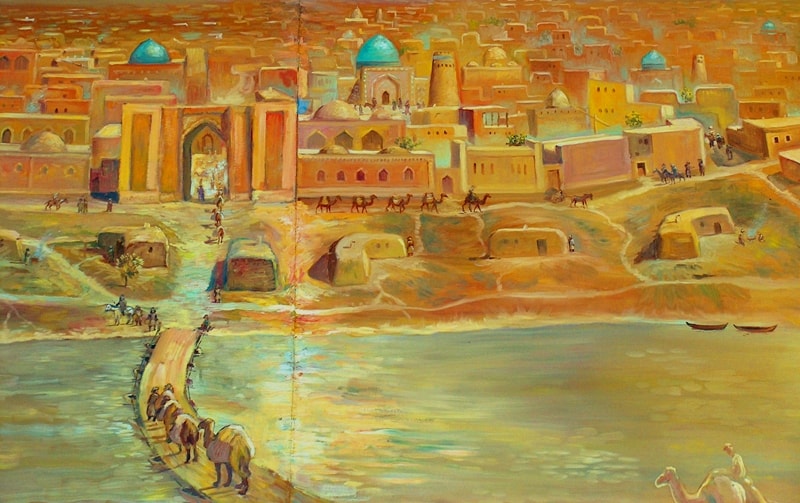
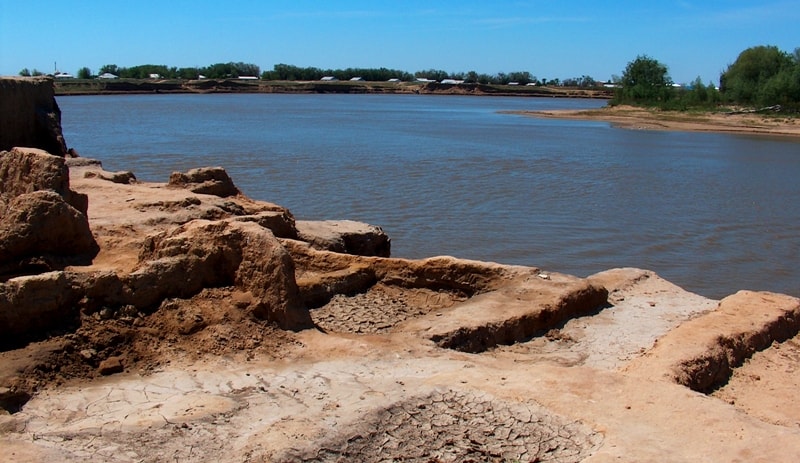
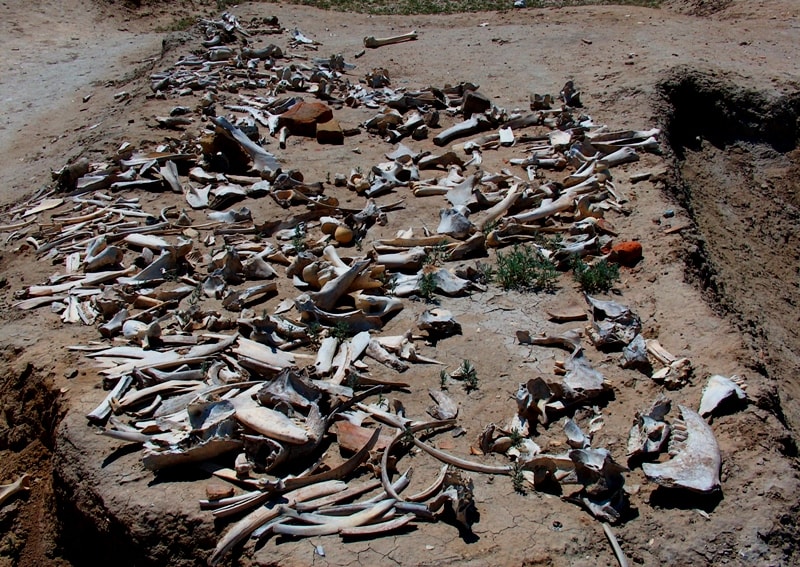
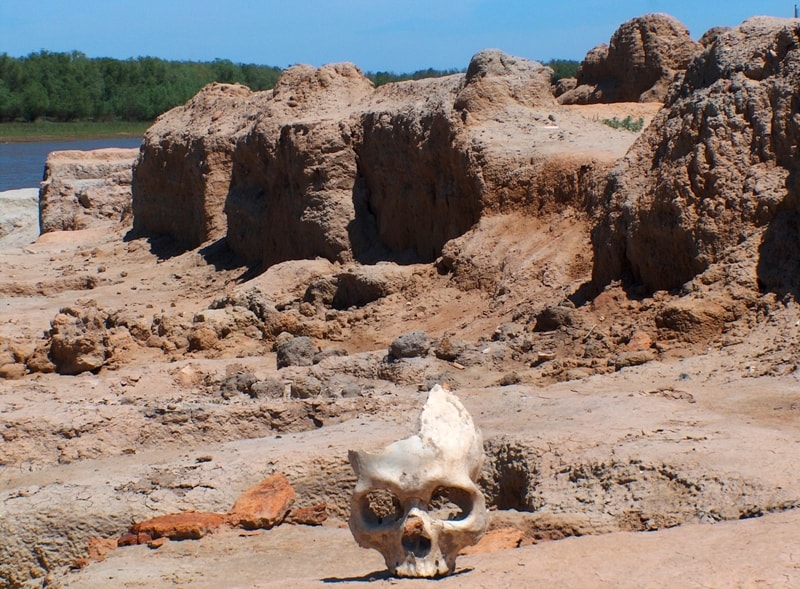
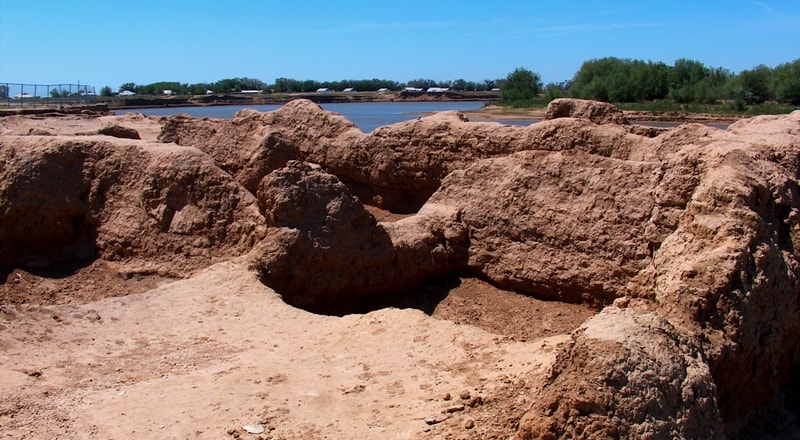
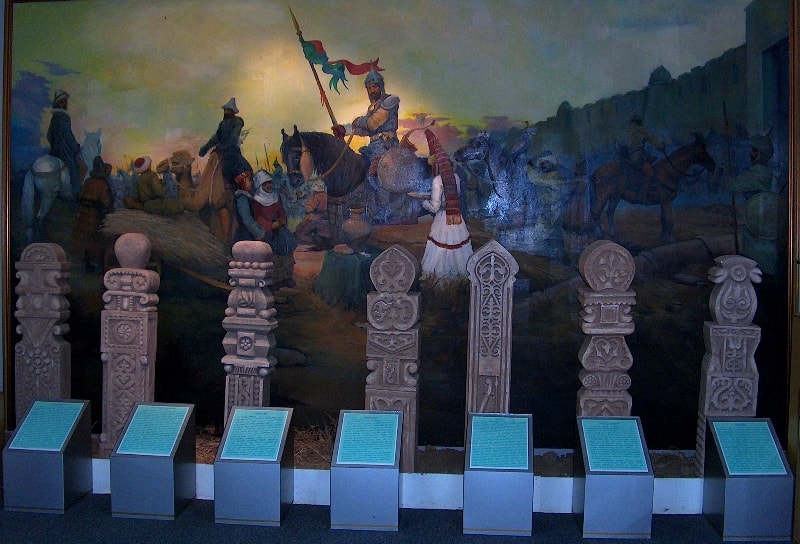
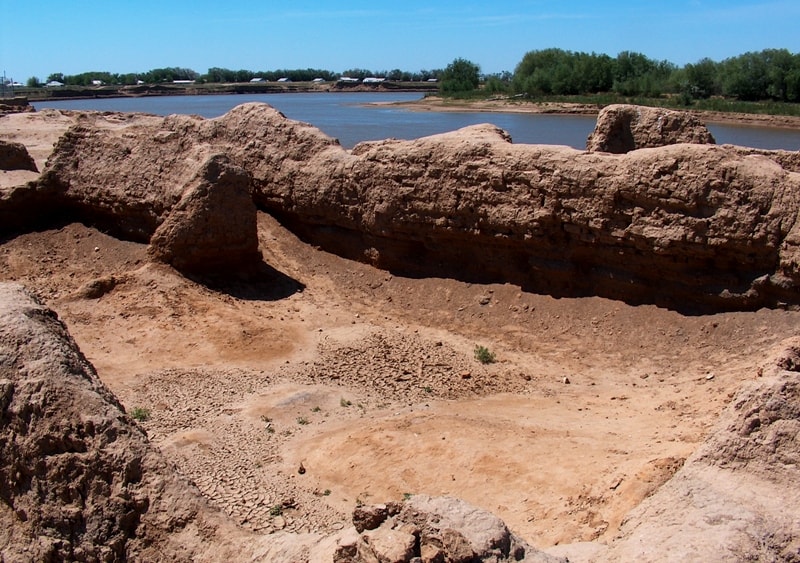
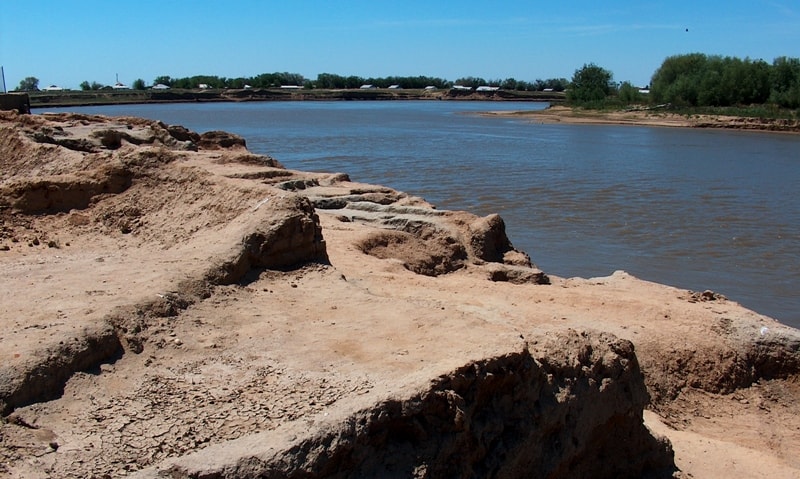
Authority:
Magazine “ World Discovery Kazakhstan”.
Photos
Alexander Petrov.







